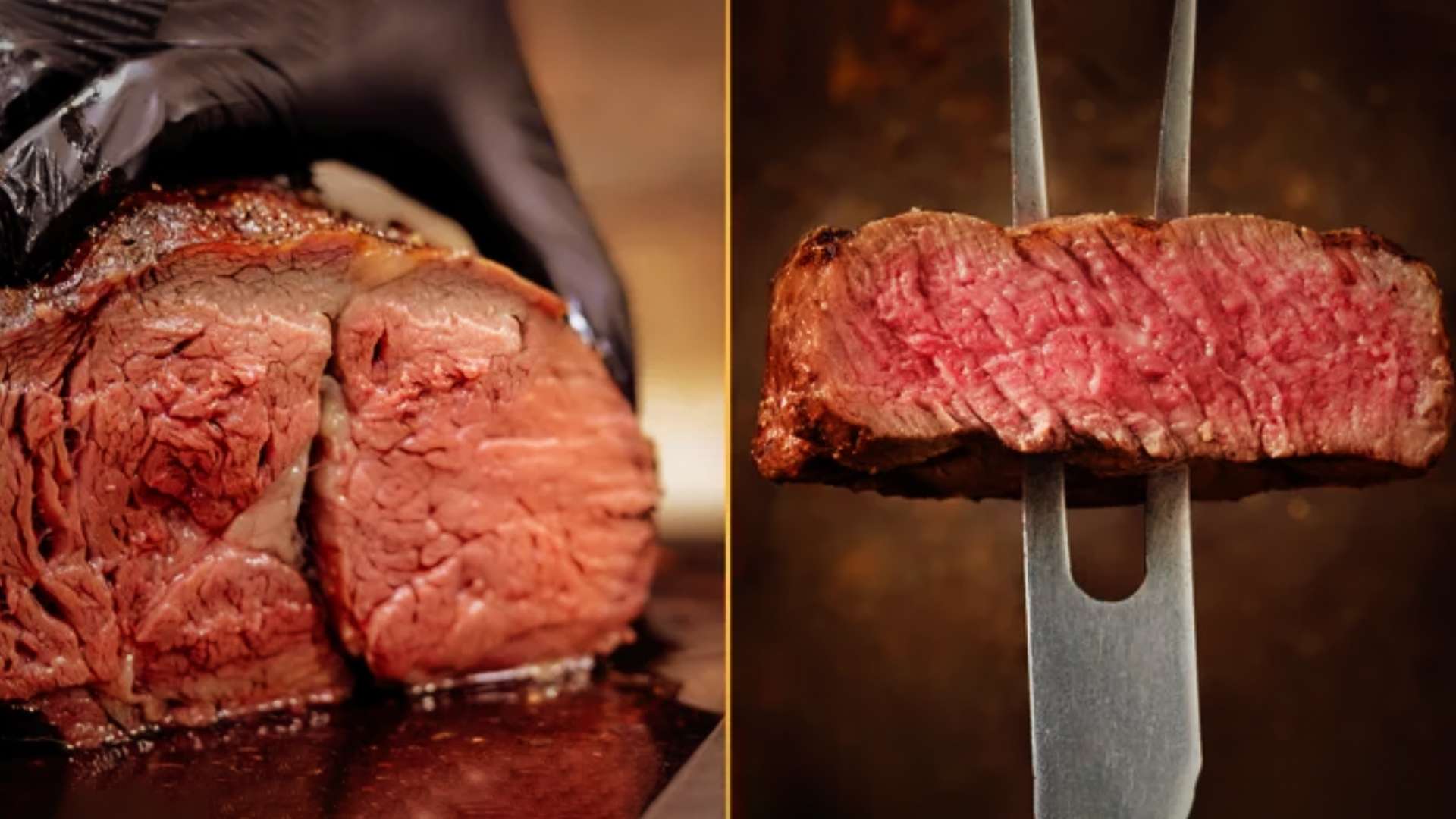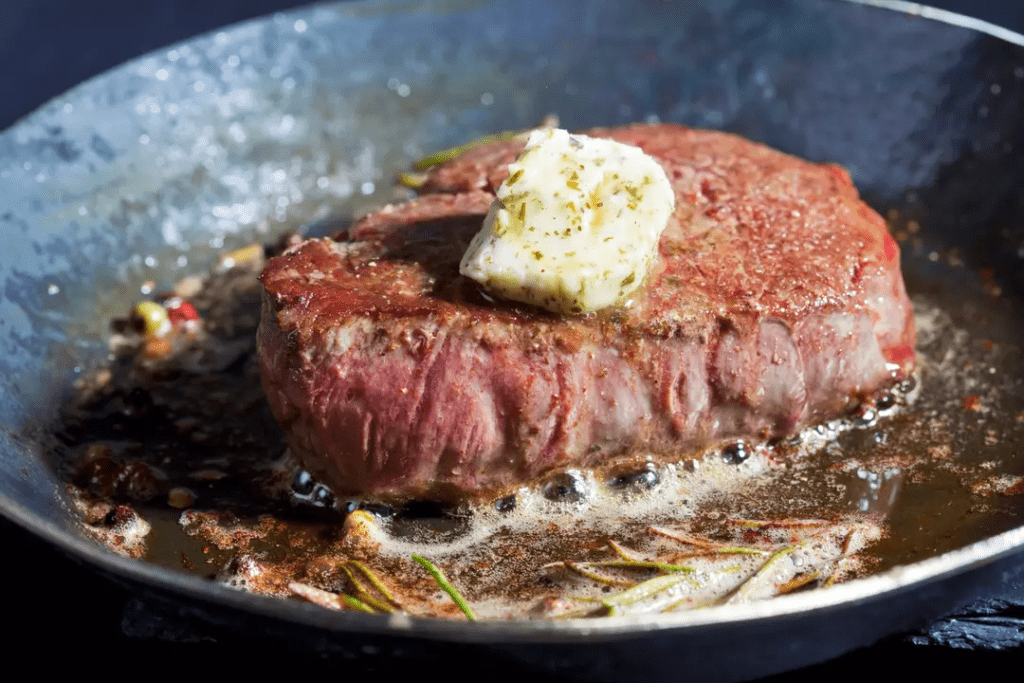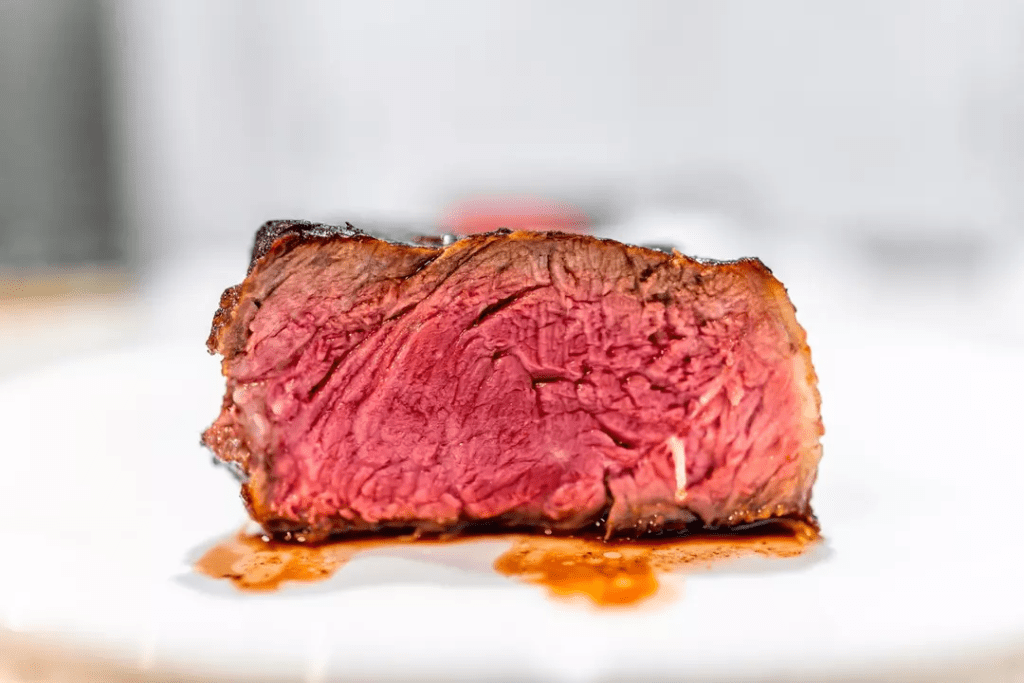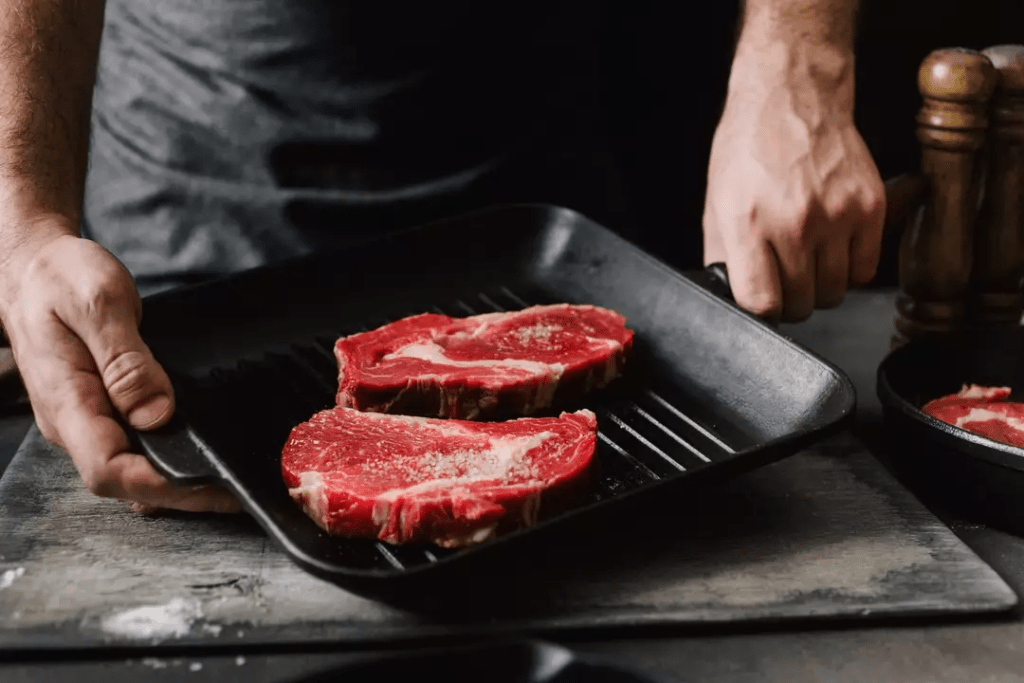The Truth About Steak’s “Bloody” Liquid: It’s Not What You Think!

When it comes to steak, many of us have a preference for how it should be cooked. Some like it charred to perfection, while others opt for a tender cut that’s barely kissed by heat. But no matter how you like your steak, there’s one common misconception that needs to be debunked: the “blood” in your steak isn’t actually blood.
Yes, you read that right! That red liquid that oozes out of your steak is not blood, and here’s everything you need to know about it. For those who love their steak on the rarer side, this revelation might just change how you look at your next order!

(Getty Stock Image)
Understanding Steak Preferences and Common Misconceptions
When it comes to steak, the ideal temperature is a matter of personal preference. Some people can’t stand the thought of eating meat that’s not well-done, while others enjoy a juicy, rare steak. Yet, regardless of how it’s prepared, the appearance of blood in your steak often raises eyebrows.
But here’s a fun fact: that red liquid isn’t blood at all. In fact, no blood is left in the meat by the time it reaches your plate.
So, What’s Actually Oozing Out of Your Steak?
The “blood” in your steak is, in reality, a mixture of water and myoglobin. Water makes up a significant portion of meat—about 75% of it, to be precise. The red liquid is rich in myoglobin, a protein found in muscle tissues, and it’s the true culprit behind the color that resembles blood.
But why does myoglobin appear so blood-like? It has to do with its iron content. When exposed to oxygen, the iron in myoglobin turns red, which is why muscle tissue has that rich, reddish hue. This is exactly why we associate red meat (like beef, lamb, and pork) with the red liquid that we see oozing out during cooking.
Interestingly, all blood is removed from meat during processing, long before it ends up in your butcher’s display case or on your plate. So rest easy—the next time you order a rare or medium-rare steak, you don’t have to worry about any blood dripping out.

The Science Behind Myoglobin and Its Role in Meat
Now that you know that the liquid is not blood, let’s dive deeper into why myoglobin is so important. Myoglobin is a protein that helps store oxygen in muscles, particularly in skeletal muscles and the heart. Its main job is to carry and store oxygen for the muscles to use during exercise.
This protein is found in most mammals, which is why we typically see it in red meats like beef, lamb, and pork. On the flip side, animals that don’t contain as much myoglobin, such as poultry and seafood, produce meat with a lighter color. So, next time you’re biting into that juicy steak, you’re actually tasting the richness of myoglobin at work, not blood!
For those interested in more science behind muscle tissue and its proteins, this article on myoglobin offers a deep dive.
Are You Eating “Bloody” Meat? Not Really!
Many people insist on ordering their steak “as bloody as possible,” but the truth is, there’s no blood in it. That “bloody” steak you’re so fond of is simply a rare or medium-rare cut of meat with myoglobin making an appearance.
Understanding this can also make it easier to appreciate different cuts of meat and their various textures. For instance, if you’re someone who enjoys steak on the rarer side, you’ll be happy to know that it’s perfectly safe to do so. And no, you’re not biting into a piece of raw, bloody meat.
How Steak Is Processed
The processing of steak removes almost all blood during slaughter and preparation. When cattle are slaughtered, their blood is drained, and the meat undergoes rigorous cleaning and inspection. The remaining fluids, like water and proteins such as myoglobin, stay intact in the muscle tissue, which is what gives steak its appearance and texture when cooked.
If you want to know more about the meat industry’s practices and how your steak is processed before it arrives at your local market, check out this comprehensive guide on meat processing.
A Chef’s Take: The “Best” and “Worst” Cuts of Steak
While we’re on the topic of steak, it’s worth mentioning that not all cuts are created equal. Some chefs have strong opinions on which cuts are worth trying and which ones you might want to avoid.
David Burke, a renowned American chef, shares his thoughts on steak cuts, specifically on the much-loved filet mignon. According to Burke, filet mignon is a popular cut, but not necessarily the best one. He explains that it became famous in France for being boneless and easy to carve, but it doesn’t have the same robust flavor as other cuts like rib-eye or T-bone.
In fact, Burke claims that filet mignon is more of a “safe bet” for kitchens because it’s simple to cook, but it doesn’t stand out compared to other, more flavorful cuts of steak. If you’re someone who’s been loyal to filet mignon, you might want to explore some other options next time you’re at the steakhouse!
For more of Burke’s expert opinions on the best cuts of steak, visit his interview on steak cuts.

(Getty Stock Image)
Social Media Buzz: What People Are Saying About Steak and the “Blood” Myth
As more people learn about the truth behind steak’s red liquid, social media has been buzzing with comments, reactions, and even some humorous takes. Here’s what the internet is saying about it:
Twitter Post:
“Just found out that the ‘blood’ in my steak isn’t actually blood. What a game-changer! Guess I’ll stop ordering it ‘extra bloody’ from now on 🤯 #SteakFacts #FoodieNews”
Check out the full Twitter thread
Instagram Post:
“That moment when you realize the red liquid on your steak is just water and myoglobin and not blood 😅 Who knew?! #SteakLovers #FoodScience”
See the Instagram post here
Facebook Discussion:
“Who else thought that steak’s red liquid was just blood? Turns out it’s just myoglobin! 😜 Makes me love steak even more. Anyone else surprised? 🍖”
Join the conversation on Facebook
Reddit Comment:
“So apparently that red liquid is just myoglobin, not blood? I feel like I’ve been lied to my entire life 😂 That explains so much! Anyone else just learning this?”
Read the full Reddit thread
Social media reactions show just how much people are learning and sharing about the science behind steak. It’s clear that myths about food often go viral, but now, we have the facts to set the record straight!
Final Thoughts on Steak and the “Blood” Myth
In conclusion, the next time you order a steak, rest assured that there’s no blood to worry about. The red liquid is simply myoglobin at work, creating the color we associate with rare and medium-rare steaks. This doesn’t make your steak any less delicious or safe to eat—quite the opposite!
For those who are serious about steak, knowing the science behind the meat can add a new layer of appreciation. Whether you like your steak rare, medium, or well-done, understanding what’s in your food makes the experience that much more enjoyable.
For more delicious insights on cooking meat to perfection, check out these steak tips and enjoy your next meal knowing you’re eating the best steak possible!
Conclusion
With the truth about steak’s “bloody” liquid out in the open, you can now enjoy your rare cuts without hesitation. Whether you’re grilling at home or ordering from your favourite steakhouse, there’s no need to fear the red liquid. After all, it’s just science at work, making your steak even more delicious.
Featured Image Credit: Getty Stock Images






